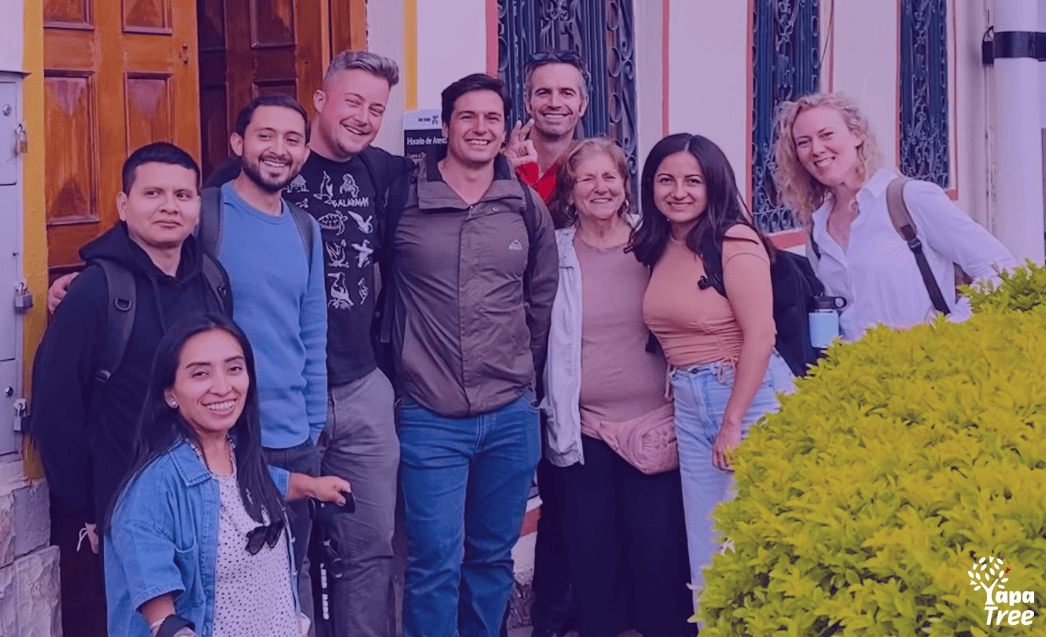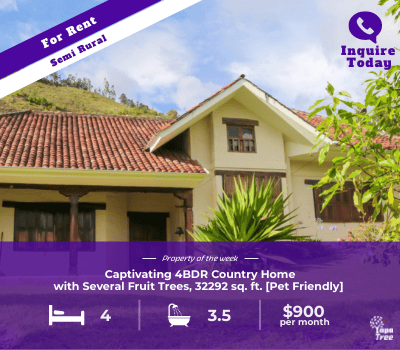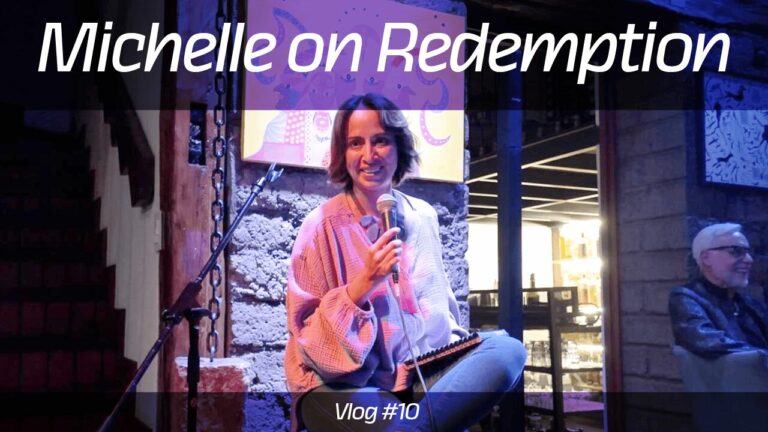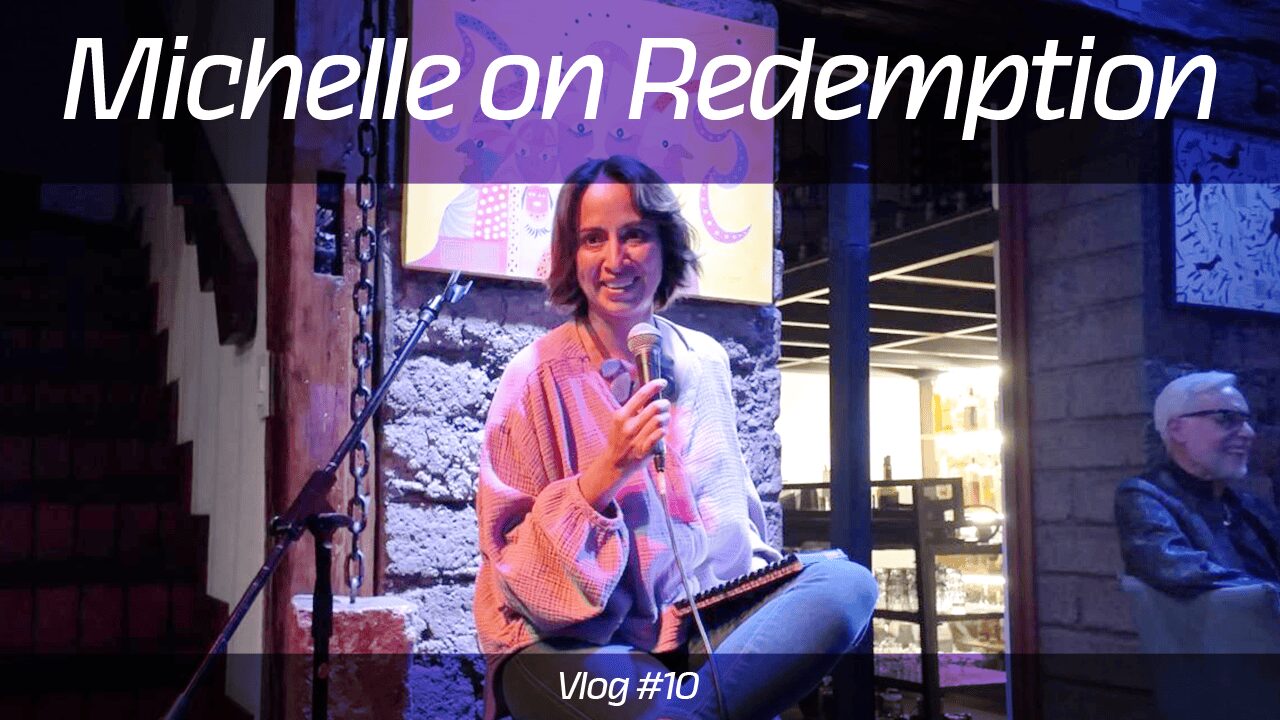If you’ve been paying attention to some of our recent articles here on Yapa Tree, you’ll have seen that we’ve been putting out informative content about retiring in Ecuador. As Yapa Tree’s youngest writer by about 30 years or so, it’s my job to discuss Cuenca as a relocation destination for young people too.
Are you a young person reading this and want to know what factors it took for a 29-year-old British guy to emigrate to Ecuador, as well as most of the costs involved? Check out my immigration story here.
In this article, I’m going to explore some of the concerns you might have about moving to Cuenca as a young person.
The Language Barrier
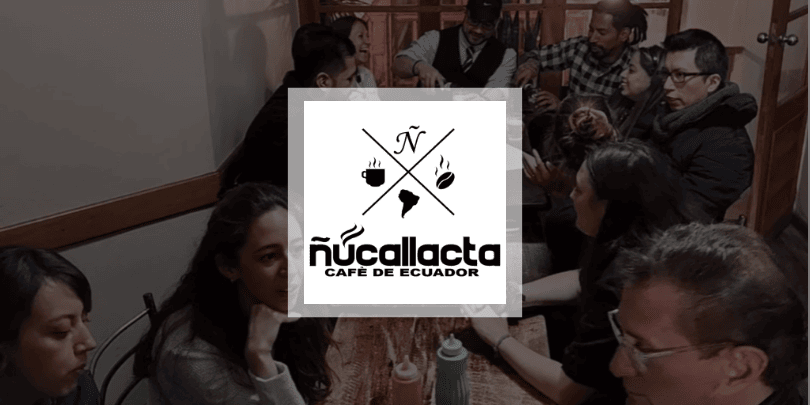
Knowing the local language can greatly improve your overall experience and make it easier to navigate daily life. Since we are younger and allegedly have ‘spongier brains’, as my more senior counterparts tell me, we’re theoretically better equipped to grab the Spanish bull by the horns and master this delightful idioma.
The good news is that Cuenca has a very easily understood accent that is sing-songy in nature and sweet on the ears. People are happy to slow down and will often want to speak some English with you. Younger locals have been studying English most of their lives and will have some level of English, but whether they talk or not will depend on their confidence levels.
Many Ecuadoreans are very shy when it comes to speaking English. Older locals might speak only Spanish or Kichwa, so there are times when knowing Spanish is an advantage, especially if you prefer to shop at the local market or live on the outskirts of Cuenca in the campo.
If you’re keen to learn, you’ll find an abundance of potential language partners if you attend an intercambio meetup. Alternatively, you can join an affordable Spanish language school for private or group classes. If you want to brush up on your Spanish before arriving, here’s Jason’s excellent guide.
Safety & Security
Some areas of South America can be dangerous, so it is important to research the specific location and take necessary precautions. Fortunately for you, Cuenca is recognized as one of the safest cities in South America, which is a major draw for the 10,000+ foreigners living in the city. Unfortunately in recent times, crime has risen, so it’s vital to keep your wits about you to avoid becoming a victim of crime.
You can read a hundred different accounts of life in Cuenca and you’ll find people who’ve never seen a crime, some who have been a victim of crime, and others who will trample on the level of security here just because a friend of a friend said something. My opinion is that Cuenca is a safe place to live as long as you exert common sense, the same as in any other city. As many of my American friends in Cuenca remind me, the crime level here is lower than in the cities they come from. I feel very safe in my neighborhood.
Local & Domestic Travel
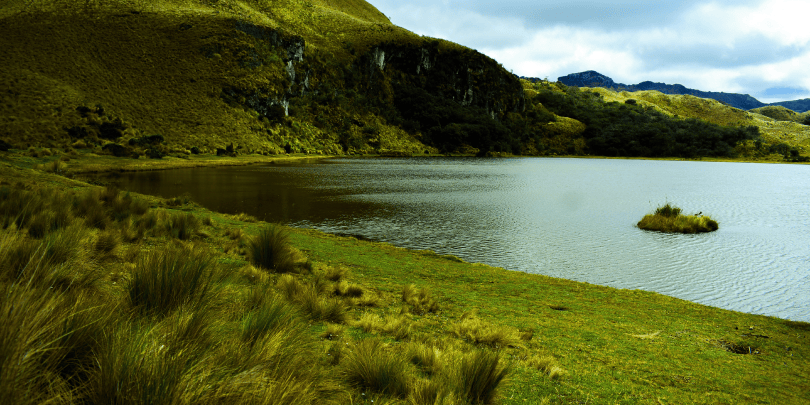
Cuenca has most of the benefits and advantages of a big city, with great bus connections being one of them. You can check out John Olsen’s Cuenca Bus and Tram Guide for getting around Cuenca, but if you want to make a day trip outside of the city, there are countless local tourism opportunities to explore:
- Cajas
- Loja
- Saraguro
- Oña
- Chordeleg
- Gualaceo
- Sigsig
- Limón Indanza
- Gualaquiza
- Azogues
- Cañar
- Ingapirca
- Aguarongo
- Yunguilla Valley
- Vilcabamba
Some of these are close, some are a bit further away, so be aware that the term ‘local tourism’ is something I use subjectively. Buses are inexpensive, often costing just a few dollars. There are also ‘buseta’ services, which are private 8-seater minivans that run several times per day to local cities and places further afield, such as:
- Quito
- Baños
- Macas
- Sucua
- Guayaquil
- Ambato
- Riobamba
- Mendez
- Peru
If you want to go even further afield, you’ve got the deeper Amazon to explore beyond Coca (Yasuni), the unique Galapagos islands, the culture of Otavalo, and the heat of the coast. My experiences of the coast have not been great, and I’m not a beach person at the best of times, but I’m told there are plenty of good beaches and direct routes, including a 8-hour direct night bus from Cuenca to Montañita. Manta is also starting to become popular with younger, beach-going digital nomads too.
For young people, this is a great country to travel in. For those who like adventure tourism, Baños and Mindo are very popular; for birders, Mindo, Limón Indanza, and Galapagos are excellent; and for those who want to party at the beach, Montañita and Salinas are the top choices. Hikers will love this country, just do a quick Google search for Quilotoa, Cajas, Podorcarpus, Pichincha, Cotopaxi, and Cuicocha.
The Cost of Living
The cost of living can vary greatly within South America, so it is important to research and budget accordingly. The majority of young people coming to Cuenca are either English teachers, remote workers, or backpackers. For all of them, the cost of living here is deemed very affordable, but is certainly higher than in smaller cities like Loja and Ambato. It is, however, considered cheaper than Manta, Guayaquil, and Quito.
YapaTree’s owner chewed the fat on the Manta vs Cuenca discussion in this great video that might answer some of your questions about coast vs mountains:
Here are a few ideas of prices in Cuenca::
- 1 bedroom apartment (basic) $200-450
- 2 bedroom apartment (basic) $250-550
- Luxury apartment $650+
- 0.5l beer $2-3
- 3-course lunch & drink (almuerzo) $2-3
- Monthly Insurance cost:~$60 per month
- Cell phone plan ~$15-20 per month
- A used or new vehicle 2-3X prices in the U.S.
In addition, locally made goods and services, food, dining out, entertainment and public transportation costs are far lower than in most of Europe or the United States.
Now, if you want designer clothing and other brands, elite technology, and imported food products, expect to pay a 100% markup due to the ridiculous import taxes and shipping costs.
Cultural Differences
Ecuador is a diverse country with a mix of indigenous, Spanish, and Afro-Ecuadorian cultures. Some cultural differences you might find in Ecuador include:
- The use of traditional clothing, such as ponchos and fedora hats, in rural areas.
- The importance of family and community in daily life.
- The use of the Spanish language, as well as indigenous languages such as Quichua and Shuar.
- A strong influence of Catholicism in religion and customs.
- A focus on local and organic foods, including mote, ceviche, and plantain.
- A strong tradition of music and dance, including Andean music and salsa.
- A deep respect for indigenous culture and traditions.
- Business is done more locally than nationally or internationally.
Some cultural differences are a challenge for foreigners to overcome:
- A different pace of life. Punctuality is not of much importance in Ecuador and it is customary to be late. Don’t expect an apology if your Ecuadorian friend is late.
- Car alarms, barking dogs, and loud music throughout the night are common. Noise, or la bulla is part of life here.
- Gringo precio. Dual pricing for foreigners will never be seen on labels, but if you don’t see a price displayed, expect to pay more than locals would, unless you have the Spanish to haggle.
- Doing business. Marketing and sales are done very differently and doing business with locals can be stressful.
- The lack of a postal system. Without a national postal service and a complicated process for importation, private couriers are the best method, but their reliability often comes under scrutiny.
These are just a few examples, as the culture of Ecuador can vary greatly depending on the region and community.
The Climate
Some parts of South America can be very hot or very cold, so it is important to consider the climate and dress accordingly.
Cuenca’s weather is unpredictable and can vary widely within any given day. Carry a sweater and small umbrella in your backpack and you will be covered for 90% of conditions.
A normal day might be somewhere in the low 20s celsius (low 70’s F), with a bit of rain or cloud cover. Alternatively, it could rain for several days in a row. Below 10 degrees, even at night, would be considered unusual. Also unusual would be 30 degrees (86 F) Moderate temperatures present a nice moderate climate that many people find very agreeable. The best months to visit Cuenca are January-May and September through October. In between, you will experience chilly, sometimes wet weather.
Want more heat and humidity? The coast and the jungle might be more for you. The coast experiences more extreme wet and dry seasons because of ocean currents. The best months to catch the sun and avoid rain on the coast are November through January. From then until April, it gets very hot and rainy there.
Health Care

Quality and accessibility of health care can vary greatly within Cuenca, so it is important to understand how things work in this regard if you need either emergency or regular access to healthcare such as for a chronic condition.
Healthcare in Ecuador is generally considered to be affordable, but the quality of care can vary depending on the system you select.
Some expats have reported positive experiences with the public healthcare system called IESS, while others have had negative experiences. If you come from a country with a real national health service and culture, you will most likely be disappointed in the public healthcare service unless it is for emergency services which may be the one bright spot in it.
The service is routinely underfunded by the government and it has become more difficult to find regular or specialist appointments. There are some exceptions for those who have established relationships with IESS doctors but if you are new, you won’t have the benefit of one of those.
Meds at no charge, which are supposed to be part of what one receives for paying the monthly premium, are often out of stock and may not be the newest or most effective type for any given condition. Corruption contributes to the lack of medicine supply in IESS. There are rings of thieves in the system who steal and then resell meds.
On the other hand, the quality, accessibility and cost of private healthcare is remarkably good compared to that in the U.S. with many of Ecuador’s doctors choosing to practice and live in Cuenca because of its many advantages over the larger cities like Quito and Guayaquil.
Most doctors in the private systems which are frequently operated by private hospitals like Santa Inez or Monte Sinai will respond to your Whatsapp message and invite you to see them the same day with a visit to their office costing just $30-40 for either general medicine and specialists. Tests are also far less expensive than in the U.S. and many can be without a prescription. For example, a typical blood panel might cost $100 here as opposed to $600+ in the U.S.
Likewise, most meds are not only much less expensive than in the U.S. but also available without a prescription which makes life much easier when you need them.
Private health insurance is available for a small fraction of the U.S. price. Actually, many expats go without insurance and simply self-insure which is an option for those with substantial savings. But you can get policies that cover up to $6000 in costs per incident for under $40 per month, for example. Whether Ecuador is just one of your destinations or staying put in Cuenca, you can buy international travel insurance that covers your healthcare amply for all your trip’s destinations. I know one Cuenca expat who purchased a year’s worth of trip insurance and paid an annual premium of $1200 (average $100 per month) with emergency medical coverage that applied whether he was in Ecuador or the U.S. It saved him from having to research all the local treatment and insurance options right away which can be a little baffling if you are new to them.
My more senior friends tell me that health insurance is economical here but I’ve never really had to pay before, being British and all that jazz. I actually have been to hospital once, before I got insurance, and it was totally free at the public hospital.
Public hospitals are a separate system outside of IESS which requires a premium payment. And public hospitals are here to serve the indigent but have a reputation for treating just about anybody who shows up asking for help at no charge. We know one expat who was rushed to one of these in Cuenca and received emergency heart surgery, a month’s stay and bags of meds as he was leaving, who paid $0. But that was 8 or 9 years ago and it is not recommended you bet on this option as funding in this particular system has suffered as it has in IESS.
Making Friends
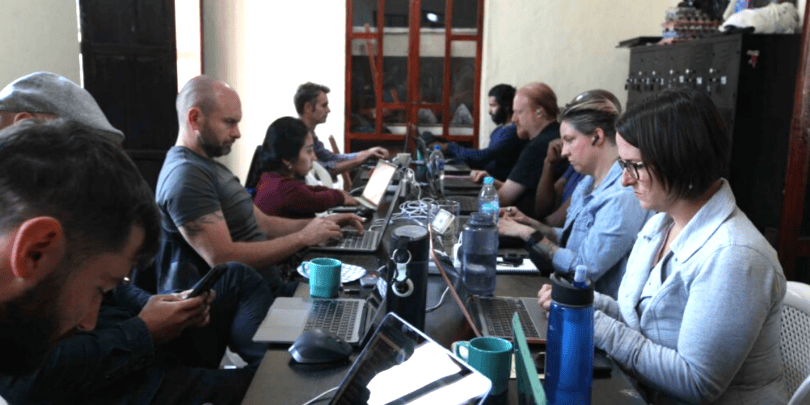
Important to getting settled in is finding a solid group of friends.
Making friends when you move to a new country can be challenging, but there are several ways to increase your chances of meeting people and building relationships. Some suggestions include:
- Join a club or group that interests you. This could be a sports team, a language exchange group, or a social club. Our partner, idiomART, is recognized as one of the best places in Cuenca to find a hobby and friends with mutual interests.
- Volunteer for a local organization like an animal charity. This is a great way to meet people who share your values and interests. I recently started volunteering on occasion with Cuenca Soup Kitchen and it has helped me to meet some of the nicest people I’ve ever met.
- Attend social events. Look for events such as parties, festivals, and concerts in your area. YapaTree has a great events section so you can stay up-to-date with the social scene here. Finding the right Instagram accounts for your interests will help too.
- Meet people through work or school. If you’re working or studying in Ecuador, you’ll likely have the opportunity to meet people through these avenues. If you’re working remotely, I actually run Cuenca Coworking Club, a social society for remote workers. Drop me a message on @CaptureJoseph on Instagram and I’ll be happy to get you involved.
- Take a class or workshop. Whether it’s learning Spanish, doing art, or cooking, taking a class is a great way to meet people who share a similar interest.
- Look for online communities of people who live in Ecuador for Expatsor Expats groups. This is a great way to connect with people and get advice on adjusting to life in the country. Cuenca Yapas and Friends is one of the best in the city. I also invite you to join Humans of Cuenca.
Ultimately, being open, friendly, and respectful will help you to make friends in Ecuador.
Dating
For younger people thinking of moving to Cuenca, the good news is that familiar apps like Tinder and Bumble are very popular. The bad news is that you will encounter many language and culture barriers here and it can be quite frustrating to find someone on your wavelength. That is part and parcel of moving to another culture with another language, but it is something that can be overcome.
Many of the younger foreigners I know that are married or in long-term relationships with Ecuadoreans met their partners organically, at concerts, on nature tours, or through their studies, for example. What that says about the efficacy of dating apps in this beautiful country I will leave it to you to make a final judgment.
What I will say is that dating opportunities have been easy to come by. I’ve been out dancing a few times and had women ask for my number, which I’m told is a pretty common way to meet someone here. If you can dance, it will certainly make you a more attractive partner (much like many of the rare birds that also choose to emigrate to this wonderful country).
Job Opportunities

The economy of Ecuador presents certain challenges for foreigners seeking employment, as the average income level is generally much lower than what they are accustomed to ($450 is the minimum legal full time salary in Ecuador). Additionally, the job market may be different in terms of opportunities and competitiveness. For example, there is a lot of nepotism here and many businesses distrust hiring non-family members. In a country where English is not widely spoken, not speaking Spanish will certainly work against you, as will failing to have a university degree (which is highly valued here). And if you are thinking about teaching English to Cuencano’s you will find that you will be lucky to make the U.S. minimum wage doing so.
I recommend that prospective expats research and understand the economic situation thoroughly before pursuing job opportunities in Ecuador. But don’t let a lack of local employment or lower pay in Ecuador deter you, however. This country offers a unique culture and lifestyle, and may have other attractive qualities that offset the potential economic challenges.
The solution for most young foreigners is plugging into the many remote work options. And if you have a North American (or European, etc.) employer or clients who are ok with your working from Cuenca, you may find that your standard of living improves significantly over your country of origin because of the overall lower cost of living here. We even know one Canadian web developer for several U.S. companies who lived modestly here and saved enough to put a 50% downpayment on a house when he moved back to Canada.
Offices & Accommodation for Remote Workers
For co-working spaces in Cuenca, you can check out this article and the accompanying videos that I put together in 2022. I can’t guarantee that all of the information is up-to-date, but it’s close. I also put together a full documentary about the remote working scene in Ecuador, which you can watch here.
For remote workers coming to Cuenca, on top of a good selection of co-working spaces, there’s fast and affordable wi-fi all over the city. This is simply something you do not need to worry about. Mobile phone plans are the same – they’re widely available, the speeds are fast, and the signals are generally pretty good. I pay $26 per month for 100 mbps speeds at home, and my phone plan is $17 per month for plenty of gigabytes and minutes, which I never even come close to using.
If you’d like to invest in an office space of your own, a simple Google search will reveal dozens of options, but better than that, we recommend having a quick chat with YapaTree Properties who are very well-connected for rentals (commercial & residential).
Moving with Kids / Family Planning

Since I had no idea about this, I reached out to my friend Michael to learn about his experience moving here with his wife and two kids. Michael and Jenna are both around 30 and the kids are both under 4 years old, for perspective.
“Overall, our experience has been great, but the journey here was a challenge. We came from Florida with no experience in this type of travel, especially with kids. We watched videos and read articles, but that was not enough to prepare us for traveling overseas for over 24 hours with two kids, a car seat, a red wagon, and 12 suitcases. Here is a summary of the challenges we had:
- With the timing of our flights and it being our kids’ first time, they went about 24 hours without sleep, which means my wife and I didn’t sleep either.
- We booked all our flights through Delta, including the one through LATAM Airlines in Quito, which created many problems when we arrived. They didn’t have a seat for me on the plane, they lost our stroller, and we almost missed the flight. All of this happened from 1-5 AM.
- I got full-blown altitude sickness while in the overnight layover in Quito airport.
- We didn’t have our Spanish down yet, so when people tried to help us, we were kind of lost, but we managed.
- I booked a shuttle to take us from the airport to our Airbnb, but they never picked up the reservation and didn’t tell me, so we were stuck at the airport in Cuenca for 1.5 hours.
- We never did an exploratory trip, so we didn’t know what to expect when we got here (where to eat, what areas were safe, how to grab a taxi, who to reach out to if we needed help, etc.).
When we arrived, we honestly thought we had made a mistake. However, everything changed for us when we were stranded at the airport after 24 hours of no sleep, cranky kids, me being sick, and feeling a little lost. I reached out to our Airbnb host to let her know what had happened. Within five minutes, she called me and said she was on her way to pick us up and as many pieces of luggage as she could fit in her small SUV. At the same time, another local Ecuadorian who had been highly recommended by other expats messaged me and said if I needed anything to let him know. Our Airbnb host took my wife and kids and half our luggage, and the other guy came and got me and the rest of our things. We had never experienced such hospitality from complete strangers. The Airbnb host carried our luggage in, made me and my wife coffee, and even put our kids down for a nap! She single-handedly saved our initial experience here.
She provided lots of recommendations for places to buy food, where to go eat, and how to get around. As newbies to Ecuador, we were super appreciative. Our first few weeks, we relied solely on UberEATS and a local market for food, but as we got more comfortable, we explored El Centro, Parque de la Madre, and other common spots here. We quickly realized the 2bd 2bath Airbnb was too small for us and decided to look for an apartment. We searched Facebook, Google, and other local postings, but then we came upon YapaTree’s rentals and found more options that were closer to what we wanted. They were super helpful in helping us get settled into our new home. At the same time, we started reaching out to other local expats in all of the Facebook groups and tried to get plugged in and set up playdates.
Within a week, we had more fellow young families than we had time to connect with. All great people who share a similar experience and journey. Through these connections, we learned about how inexpensive it is to have a nanny here, and it was a no-brainer. We asked around in the different Facebook groups about who they recommended and went with an amazing nanny who came highly recommended by other families. She speaks enough English for us to communicate without translating, speaks only Spanish with the girls so they can learn, and is just all-around great with the kids. Our girls love her, and having her here during the week allows me to focus on work and for my wife to take Spanish classes. When work is not too busy, my wife and I can also have lunch dates. It has been a game-changer and it really allows my wife and I to be our best selves for our family.
We are about 3 months into our experience here, and it really feels like home. I have a community of coworkers I get to connect with during the week, we have a great and growing community of young families that we get to connect with weekly for playdates, and our family is the best it has ever been. Our oldest is about ready to start preschool. We have a few places that our friends recommended and will be enrolling her soon. Looking up schools on our own was hard at first, but again the community of parents here is amazing and they have been very helpful in narrowing it down to a few solid schools. Overall, despite the initial challenges, we are grateful for the hospitality and help we received, and we are excited to continue our journey here in Ecuador.
Thanks Michael!
Food (Healthy & Not So Healthy)
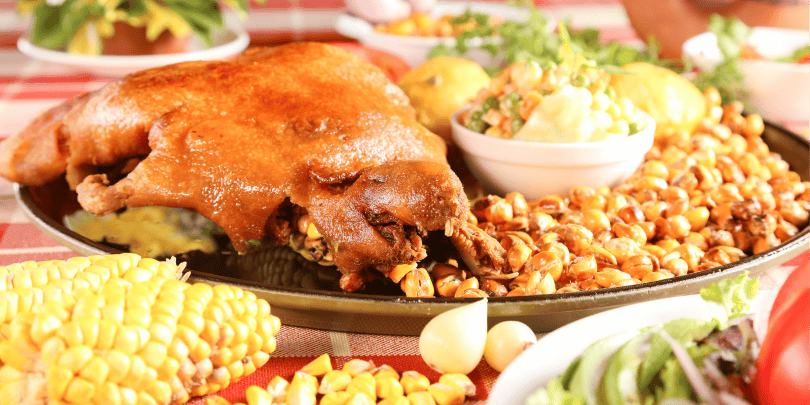
For a rundown on the local diet and foods, check the section in this Yapatree article called ‘Cuisine of Cuenca’. People in the Sierras including Cuencanos are brought up on starchy, bland dishes and chewy. over-cooked meats and you will encounter this type of food in local homes, restaurants and huecos (food stands).
There is plenty of good news about the food culture in Cuenca.
Restaurants
There are some great local Ecuadorian restaurants in Cuenca where the owner or chef has acquired skills and experience to modify local recipes to actually taste good.
Seafood restaurants, with dishes originating from the Ecuadorian coast, like shrimp and fish ceviche and crab (cangrejo) are plentiful and many are good and inexpensive. And residents of Cuenca, whether Cuencano or expats, take regular advantage of the high quality seafood brought in from the coast just a few hours away.
La Guarida. Monthly storytelling events, live music, cinema nights twice a week, and an incredible menu described as ‘casual gourmet’ have seen this unique evening hangout receive an abundance of praise from foreigners. When it comes to scheduling and sharing events, they always plan ahead so that you can too!
Cuenca has also become a real restaurant town in recent years with what seems to be new, trendy-sounding places opening almost daily. Expats will often take credit for raising Cuenca’s quality and quantity in Cuenca, expanding the number and quality of dining establishments. But the successful restaurateurs have learned how to thrive by appealing to both locals and expats. Fortunately, many Cuencanos are pretty affluent and many have traveled so that they have learned to appreciate a pretty wide variety of cuisines that are found in other countries. There are loads of “ethnic” or specialty restaurants including Chinese, Japanese, Thai, Indian, Italian, Mexican, Mediterranean, Middle Eastern and more.
Shopping
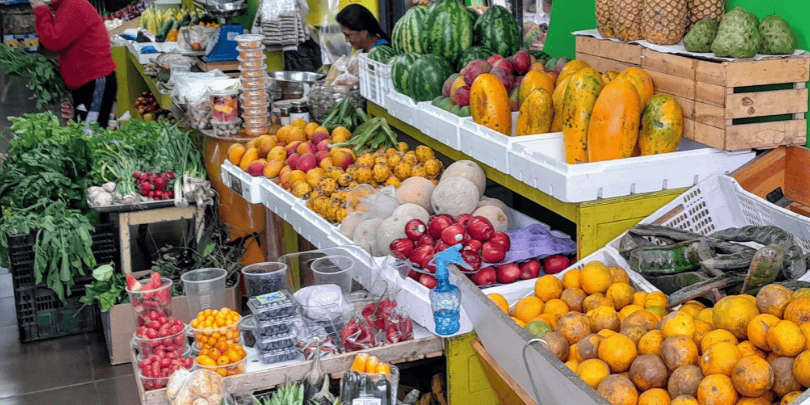
One immediately noteworthy aspect of food here is that vegetarians and vegans can be fairly pleased with Cuenca’s range of cruelty-free comida, but that will of course depend on what city/country they are using as a base of comparison.
In terms of healthy food, you’ll be pleased to know that organic vegetables and fruit are the norms, not the exceptions. If you want to stock up on lovely, fresh, delicious local produce, head to one of the indoor markets and do your best haggling!
Cuenca offers no shortage of food shopping options either. For example, it is home to many indoor and outdoor markets, which are a great place to find fresh produce, but you might want to avoid the unrefrigerated meat. One of the most popular markets is the Mercado 10 de Agosto, which is located in the heart of the city on Calle Larga. Here you’ll find everything from locally grown fruit and vegetables to handmade pottery and jewelry.
There are also convenient and modern supermarkets like Supermaxi, Aki and Coral, all Ecuadorian chains, that offer the convenience and variety of supermarkets in other countries. You will also encounter a large and growing number of excellent specialty/gourmet shops about which yapatree has published a 3 part guide.
There is plenty of good news about the food culture in Cuenca. It has become a real restaurant town in recent years with what seems to be new, trendy-sounding place opening almost daily. Expats will often take credit for raising the restaurant bar in Cuenca, expanding the number and quality of dining establishments. But the successful restaurateurs have learned how to thrive by appealing to both locals and expats. Fortunately, many Cuencanos are pretty affluent and many have traveled so that they have learned to appreciate a pretty wide variety of cuisines that are found in other countries. There are loads of “ethnic” or specialty restaurants including Chinese, Japanese, Thai, Indian, Italian, Mexican, Mediterranean, Middle Eastern and more,
Nightlife
Personally, I’m not a fan of Cuenca’s nightlife and rarely go out. Call me boring, but it just does nothing to inspire me. The drinks are overpriced, the music sucks, and nightclubs lack ventilation. It’s like being back in England. For me, after traveling the world and hitting up clubs in dozens of countries and cities, Cuenca just doesn’t really excite me. Maybe it’s not so bad, but for me personally, it’s more of a chore than anything. I’d rather go to a pub and have great conversations with my friends.
If you like reggaeton, you’ll love Cuenca nightlife. They don’t seem to play much else, unfortunately. However, if, like me, you can’t stand reggaeton, there are 4 places that aren’t too bad:
- Zoociedad
- Bumba Fruits & Beer
- La Mesa
- Club 184
Banking
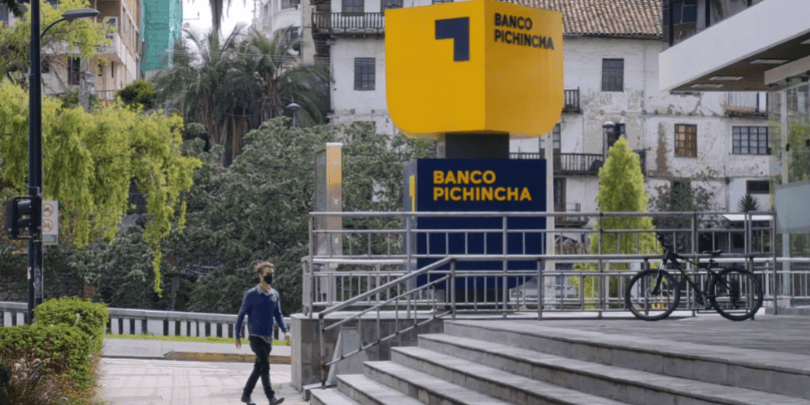
Opening a bank account as a foreigner in Ecuador can be a bit more complicated than for a local citizen. Banks may require proof of residence, such as a lease or utility bill, as well as identification documents such as a passport or cedula. They may also require a local contact, such as a friend or family member, to co-sign the account. Additionally, some banks may require a minimum deposit or charge a fee for opening the account. It’s worth noting that the requirements for opening a bank account may vary depending on the bank, so it’s important to check with multiple banks and compare their requirements.
In my experience, the first bank I went to was incredibly rude to me and would not help me to open my account. It was 4:45pm on a Friday, so I can understand why, but it was a bit offputting. Then, I asked my facilitator who helped me get my visa, and she had a good connection (a bank director) who got me in for a private meeting in his nice office. I wasn’t required to bring a long list of documents thanks to this connection, and my account was opened very quickly.
Many foreigners never bother to open bank accounts here, and just suffer withdrawal charges. This boggles my mind and is not advisable. The biggest financial instutituions in Cuenca are JEP and Banco Pichincha. I’ve heard that Jardin Azuay is the easiest place for a young foreigner to open an account. Americans tell me that Charles Schwab bank waives withdrawal fees and so it is a good place to open an account before leaving the US. It is also easy to set up accounts with online, international money transfer services like remitly.com or worldremit.com which move money to your bank here from your bank outside of Ecuador and are economical, reliable and fast.
Residency & Visa Options
There are many visa options for Ecuador, all of which are outlined in this great article that our publisher, Jason Scott, put together last year. Be aware that the rules and regulations can change at any moment, and what you really need to do is speak to a professional who handles visa applications day-in day-out. One well-priced, reputable law firm with deep visa experience is Expat Law Group. Their professional staff have helped many YapaTree friends to start their new lives in Cuenca.
Nicest Places to Hang Out in Nature
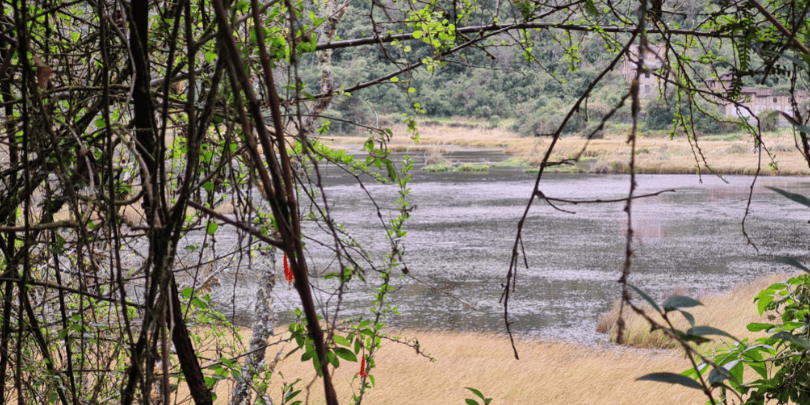
For young folk in Cuenca, getting out and about in nature is one of the best things to do, and for many is a huge attraction for moving to the Andes. Here are some beautiful spots in Cuenca to search for and visit.
- Cajas National Park
- Megaparque Ictocruz
- Parque Paraiso
- Laguna Llaviuco
- San Joaquin
Looking for a licensed guide to help? Amazing South American Tours are a quality bilingual option.
Gringo Hangouts
Looking for other foreigner hotspots to make new friends and connections? These are some of the most popular places:

- Common Grounds – situated by Unidad Nacional at the entrance to Gringolandia, this is arguably the most popular place to find Americans in the evening.
- La Guarida – monthly storytelling events, live music, cinema nights twice a week, and an incredible menu described as ‘casual gourmet’ have seen this unique evening hangout receive an abundance of praise from foreigners. When it comes to scheduling and sharing events, they always plan ahead so that you can too!
- Kolo cafe – this café and bakery has become a great haunt for Americans in particular, with the owner being very well-known and liked in the community
- Bistro Yaku – a total gem of a place, tucked away behind a backpacker hostel, and serving incredible gourmet dishes and some of the best live music in Cuenca
- Selina Hotel – the most popular hotel in Cuenca for young foreigners and digital nomads visiting the city. For those unfamiliar with Selina hotels, this chain is aimed at young travelerstravellers and offers yoga, cinema, workshops, a co-working space, and more!
- Café Ñucallacta – visit Rumi at Café Ñucallacta and you’ll make a new friend. He is one of the most-liked people in Cuenca and his café has become synonymous with great coffee in the city. He’s recently opened a lovely second spot on Avenida Loja too!
- Sunrise Café – arguably the best breakfasts in Cuenca. Some older foreigners come here literally every day, knowing that they can find fellow expats, good conversation, and a hearty meal
- Inca lounge – right on the Tomebamba river and has a built-in taco restaurant starting at just 50c per taco!
- Goza – this fancy café/bar on Calle Larga has an ideal location and inviting terrace that sprawls onto the street. With the layout and design somewhere familiar to US and European visitors, you can often see tourists sitting here
- Wunderbar – with some of the best live music and a German owner (so I’m told), this is a place where you might bump into a European traveler or a young expat rocker
Comparing Cuenca to other Latin American Cities
Cuenca vs Medellin
Comparing Cuenca and Medellin is not that straightforward, but it’s something that many Digital Nomads and backpackers do, as they are both popular with remote workers and those exploring South America.
Cuenca, Ecuador:
- Located in the Andean region of Ecuador
- Population of approximately 520,000
- Known for its colonial architecture, cultural heritage, and outdoor activities
- GDP per capita of $5,000 (2018)
Medellin, Colombia:
- Located in the Aburrá Valley region of Colombia
- Population of approximately 2.5 million
- Known for its innovation and technology, as well as its transformation from a violent past to a modern city.
- GDP per capita of $14,000 (2018)
From this data, we can see that Medellin is a bigger city than Cuenca, and it has a higher GDP per capita which means, on average, people living in Medellin have more purchasing power. Medellin is also known for its innovation and technology sector, while Cuenca is known for its cultural heritage and outdoor activities. Both cities have different aspects to offer to potential residents and visitors. For those looking for a slower way of life and more culture, Cuenca is arguably the better offer. For fun, partying, and dating, Medellin has the upper-hand.
Cuenca vs Cusco
Cuenca and Cusco are both cities in South America with distinct characteristics. Comparing them based on data can give an idea of the differences between the two cities. Many compare them for their culture, history, and aesthetic appeal to foreigners.
Cusco, Peru:
- Located in the Andean region of Peru
- Population of approximately 430,000
- Known for its rich Incan history, including the famous Machu Picchu and other Incan ruins, as well as its vibrant culture and traditional crafts
- GDP per capita of $8,600 (2018)
Cusco is a bit smaller than Cuenca, and is known for its rich Incan history and cultural heritage, while Cuenca is known for its colonial architecture and outdoor activities. Both cities have different aspects to offer to potential residents and visitors. Personally, I found Cusco annoying, as I couldn’t walk 30 seconds without someone trying to sell me something. It was suffocating. This is very rare in Cuenca.
Having “The Chat” With Your Family, Friends, & Boss
Telling your family and friends that you are emigrating permanently to another country can be a difficult conversation, but it is important to approach it with kindness and understanding.
Here are some suggestions for how to have this conversation:
- Explain your reasons for emigrating: Share with your family and friends the reasons why you have decided to move, such as job opportunities, personal growth, or a desire for a different lifestyle.
- Reassure them that you will stay in touch: Let them know that you will keep in touch regularly through phone calls, video chats, and social media.
- Share your excitement: Show your family and friends that you are excited about this new opportunity, and that you believe it will be a positive change for you.
- Be understanding of their feelings: Recognize that this news may be difficult for your family and friends to hear and that they may have mixed emotions about your decision. Show empathy and understanding.
- Plan a visit or invite them to visit: Make a plan to see each other soon, or invite them to come to visit you in your new home.
- Keep an open mind: It’s important to be open to the idea that their reaction may not be what you expect and be ready to listen to their concerns and respond accordingly.
Remember that your family and friends may have a lot of questions and concerns, so it is important to be patient and understanding. Communicate openly, and be prepared to answer their questions. as best as you can.
Now, if your boss is your biggest hurdle and you want to work remotely, this letter can help.
Dear [Boss’s Name],
I hope this letter finds you well. I am writing to express my interest in negotiating a remote work agreement with our company. As we have all seen, the current global situation has made remote work a viable and necessary option for many businesses. I believe that a remote work agreement would be beneficial for both myself and the company. At this moment in time, I would like to relocate to Cuenca, Ecuador.
As you know, I have been a dedicated and productive member of the team for [X amount of time]. I am confident that I can continue to make valuable contributions to the company while working remotely. Remote work would allow me to [insert specific reasons why remote work would be beneficial for you, such as reducing commute time, increased flexibility, better work-life balance, etc.].
I understand that remote work may present certain challenges and I am willing to work with the company to ensure a smooth transition. I am open to discussing and implementing any necessary systems or protocols to ensure that my work is done efficiently and effectively.
I would greatly appreciate the opportunity to discuss this further and come to a mutually beneficial agreement. Please let me know if there is a time that works for you to discuss this further.
Thank you for your time and consideration.
Sincerely,
[Your Name]
Want to Learn More?
Young people who have found and surfed this article, I thank you for your time and attention. I’ve done my best to cover topics of greatest interest to younger expats as many subjects as possible, but there are some things I have left out because they are too subjective (best things to eat) or I do not wish to fake true expertise (taxes and legal guidance).
If you do want to talk to me personally to ask a barrage of questions about Cuenca, you can commission a 2-hour video call with me for $30. This $30 is part of the Humans of Cuenca project and will go to a local charity.

